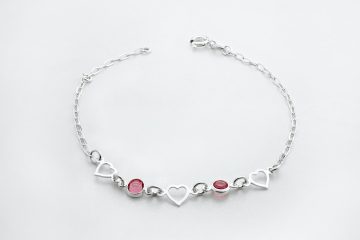Friendship bracelets are more than just accessories; they are a symbol of love, connection, and the bond shared between friends. These colorful and intricate pieces of jewelry have been around for centuries, originating from various cultures and traditions. In this article, we will delve into the art of friendship bracelets, unraveling the diverse techniques used to create them.
1. Understanding the History of Friendship Bracelets
Friendship bracelets have a rich history that dates back thousands of years. They have been found in ancient civilizations such as the Mayans and the Egyptians, where they were made using natural fibers like hemp and plant materials. These early bracelets were often adorned with beads, shells, and even precious stones.
As time passed, friendship bracelets became popular worldwide, symbolizing unity and friendship. In the 1970s, they gained significant popularity in the United States during the hippie movement and the surge of interest in handmade crafts. Today, friendship bracelets continue to be a cherished symbol of friendship and are crafted using a wide range of techniques.
2. Macramé Friendship Bracelets: The Art of Knotting
Macramé is a popular technique used to create friendship bracelets. It involves the art of knotting various cords or threads to form intricate patterns. This technique originated in the Arab world and was later adopted by sailors who used it to create decorative knots.
To make a macramé friendship bracelet, you start by gathering several strands of thread or cord. These strands are then secured at one end, and the knotting process begins. The knots are created using a combination of basic knots such as the square knot, half hitch, and double half hitch. These knots are repeated in a specific pattern to form the desired design.
Macramé friendship bracelets offer endless possibilities for creativity, allowing you to experiment with different colors, patterns, and textures. They can be embellished with beads, charms, or other decorative elements to add a personal touch.
3. Kumihimo Friendship Bracelets: The Art of Japanese Braiding
Kumihimo, which translates to “gathered threads” in Japanese, is a traditional braiding technique that originated in Japan. It involves weaving multiple strands of thread or cord to create intricate patterns and designs.
To make a kumihimo friendship bracelet, you need a kumihimo disk or marudai, which serves as the base for braiding. The disk has slots along the circumference where the threads are placed. By moving the threads in a specific sequence, you create a woven pattern.
Kumihimo braids can be as simple or complex as desired, with different color combinations and patterns. Adding beads or charms to the braids enhances their visual appeal. Kumihimo friendship bracelets are not only beautiful but also durable, making them ideal for everyday wear.
4. Embroidered Friendship Bracelets: The Art of Needlework
Embroidered friendship bracelets offer a unique and intricate approach to bracelet making. This technique involves using a needle and thread to stitch colorful patterns onto a fabric base, such as cotton or silk.
To create an embroidered friendship bracelet, you start by selecting a fabric base and a variety of threads in different colors. The pattern is then drawn or traced onto the fabric, serving as a guide for the stitching. Using embroidery stitches such as the satin stitch, backstitch, or French knot, you carefully fill in the design with thread.
Embroidered friendship bracelets are highly customizable, allowing you to create intricate designs and incorporate personal touches. The use of various embroidery stitches adds depth and texture to the bracelet, making it a wearable work of art.
5. Beaded Friendship Bracelets: The Art of Stringing
Beaded friendship bracelets combine the beauty of beads with the art of stringing. This technique involves threading beads onto a string or cord to create stunning and eye-catching bracelets.
To make a beaded friendship bracelet, you start by selecting a string or cord and a variety of beads in different shapes, sizes, and colors. The beads are then threaded onto the string in a specific pattern or design. Various beading techniques, such as the peyote stitch or brick stitch, can be used to create intricate patterns.
Beaded friendship bracelets offer endless possibilities for creativity. You can experiment with different bead combinations, incorporate charms or pendants, and even mix different types of beads like glass, seed beads, or gemstones. The result is a beautiful bracelet that reflects your personal style.
6. Conclusion
Friendship bracelets are not just pieces of jewelry; they are meaningful symbols of connection and love. The art of friendship bracelet making encompasses various techniques, each with its own unique charm and beauty. Whether you prefer macramé, kumihimo, embroidery, or beading, there is a friendship bracelet technique that will resonate with your personal style.
These bracelets allow us to express our creativity, celebrate friendship, and carry a piece of our loved ones with us wherever we go. So, gather your threads, cords, beads, and needles, and embark on a journey into the captivating world of friendship bracelet making.
FAQs (Frequently Asked Questions)
1. Can I make friendship bracelets using different techniques in one piece?
Yes, you can combine different techniques to create unique and personalized friendship bracelets. For example, you can incorporate macramé knots with beading or embroidery stitches to add texture and visual interest to your bracelet.
2. Are friendship bracelets only meant for friends?
While friendship bracelets are traditionally exchanged between friends, they can also be given as tokens of love and appreciation to family members, romantic partners, or anyone you hold dear. The sentiment behind a friendship bracelet extends beyond the label of friendship.
3. How long does it take to make a friendship bracelet?
The time required to make a friendship bracelet depends on the complexity of the design and the technique used. Simple bracelets can be completed in a few hours, while more intricate patterns may take several days or even weeks to finish.
4. Can I sell friendship bracelets I make?
Absolutely! If you enjoy making friendship bracelets and want to share your creations with others, you can sell them. Online platforms, local craft fairs, and social media are great avenues to showcase and sell your handmade bracelets.
5. Are there any specific color combinations that symbolize something in friendship bracelets?
While there are no strict rules regarding color combinations, certain colors are often associated with specific meanings. For example, red symbolizes love and passion, while blue represents trust and loyalty. You can choose colors based on personal preferences or consider the symbolism behind different hues.




